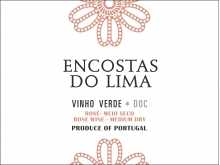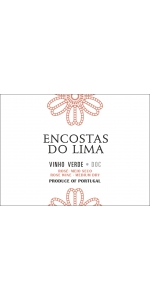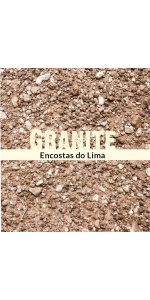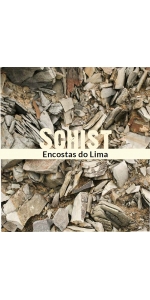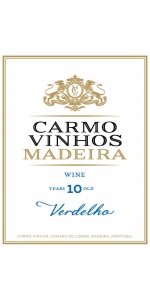Lima Vinho Verde Rose 2016
| Country: | Portugal |
| Region: | Vinho Verde |
| Winery: | Encostas do Lima |
| Vintage: | 2016 |
| Bottle Size: | 750 ml |
Lima Vinho Verde Rose is made from 75% Souzao, 15% Borraçal and 10% Espadeiro.
It is a blend of 75% Souzao (same as Vinhao), 15% Borraçal (which is also known as Caino Tinto) and 10% Espadeiro:
Souzão (or Sousão or Vinhão) is a Portuguese wine grape that is used in the production of port wine. While originating in the Minho regions, it is used primarily in Australia, California and South Africa. In Portugal, it is also an authorized planting in the Douro, and Dão-Lafões area (Vinho do Dão). The grape is known for the deep color it produces in a wine as well as its coarse and raisiny taste.
Caiño tinto (also known as Borraçal) is a red Galician wine grape variety that is also grown in Portugal's Vinho Verde wine region where it is known as Borraçal. In Spain, it is a permitted variety in the Denominación de Origens (DOs) of Rías Baixas and Ribeiro where it produces highly perfumed wines with noticeable tartness and high acidity.
Espadeiro is a red Portuguese wine grape planted primarily in the Minho region for making Vinho Verde. It is also grown across the border, in Spain, in Galicia where it is used to make light bodied wines.
Vinhão (also known as Souzao or Sousao) is a Portuguese wine grape used in the production of port wine. While originating in the Minho regions, it is used primarily in Australia, California and South Africa. In Portugal, it is also an authorized planting in the Douro, and Dão-Lafões area (Vinho do Dão). The grape is known for the very deep color it produces in a wine as well as its coarse and raisiny taste.
Lima Granite Vinho Verde is made from 100 percent Loureiro.
This special project from the Adega Ponte de Lima highlights the diverse soils of the Vinho Verde region. Made from 100% Loureiro grapes, both the Granite and Schist varieties boast a crisp acidity and expressive minerality.
Lima Vinho Verde Granite displays intense floral aromas with great freshness and more accentuated minerality.
Sushi, fish, seafood, cheeses and salads.
Lima Xisto (Schist) Vinho Verde is made from 100 percent Loureiro.
his special project from the Adega Ponte de Lima highlights the diverse soils of the Vinho Verde region. Made from 100% Loureiro grapes, both the Granite and Schist varieties boast a crisp acidity and expressive minerality.
Lima Schist Vinho Verde displays subtle yet more complex aromas. Full bodied, persistent and engaging.
Sushi, fish, seafood, cheeses and salads.
Praia Aveleda Vinho Verde NV is made from 40% Loureiro, 20% Trajadura, 20% Arinto, 20% Azal.
Praia, which means "beach" in Portuguese, is a smooth and fresh wine with delicate and lovely fruity flavors. Slightly spritzy, it is well balanced and very refreshing.
The region is typical for its unique wines that are fresh and light, combined with a very well balanced acidity. These characteristics result from the region's unique soil and climate, with a strong Atlantic influence that you will identify when you taste it.
The wine is ideal as an aperitif or throughout a meal, especially with fish, seafood, white meat and salads. Due to it freshness, it is particularly pleasant in a relaxed and informal ambiance.
Carmo Vinhos Madeira Verdejo 10 Yr an amber medium dry wine with medium body and acidity. Rich aroma and flavor of dried fruits, nuts and caramel, showing a vibrant character, lengthy and well balanced. An excellent aperitif or as an accompaniment to pates.
Lima Vinho Verde Rose is made from 75% Souzao, 15% Borraçal and 10% Espadeiro.
It is a blend of 75% Souzao (same as Vinhao), 15% Borraçal (which is also known as Caino Tinto) and 10% Espadeiro:
Souzão (or Sousão or Vinhão) is a Portuguese wine grape that is used in the production of port wine. While originating in the Minho regions, it is used primarily in Australia, California and South Africa. In Portugal, it is also an authorized planting in the Douro, and Dão-Lafões area (Vinho do Dão). The grape is known for the deep color it produces in a wine as well as its coarse and raisiny taste.
Caiño tinto (also known as Borraçal) is a red Galician wine grape variety that is also grown in Portugal's Vinho Verde wine region where it is known as Borraçal. In Spain, it is a permitted variety in the Denominación de Origens (DOs) of Rías Baixas and Ribeiro where it produces highly perfumed wines with noticeable tartness and high acidity.
Espadeiro is a red Portuguese wine grape planted primarily in the Minho region for making Vinho Verde. It is also grown across the border, in Spain, in Galicia where it is used to make light bodied wines.
The Encostas do Lima Estate
Encostas do Lima is produced at Adega Cooperativa de Ponte de Lima, a beautiful small town with a Roman bridge and medieval towers.
The Encostas do Lima Vineyard
Vinho Verde country is located in northeastern Portugal and is the largest demarcated wine region in Portugal (61,750 acres in size). The six official sub-regions are: Moncão (Alvarinho country), Lima (our wine), Braza, Basto, Peñafiel and Amarante. The maximum yield is 5.45 tons/acre (80 hectoliters/hectare). Soils are poor with an underlying granite base. Grapes used in the production of Vinho Verde are: Alvarinho, Rabigato, Loureiro, Batoca, Trajadura, Avesso, Pederña, Azal.
- back
The climate in the Champagne region in 2006 was characterised by a hot, dry season, which had a significant impact on the vines. September’s summery conditions were decisive, effectively drying out the outbreaks of botrytis and encouraging exceptional ripening of the grapes. Beginning on 11 September, the harvest stretched out for almost three weeks, the ideal time for a superior-quality crop. This vintage is a perfect example of how a favourable climate can influence the champagne quality.
Dom Pérignon Vintage 2006 Plénitude 2 marks a new encounter between Dom Pérignon and the year 2006, underlining the crucial importance of time in the making of this vintage. Its persistent, suspended light offers us an invitation to contemplation, celebrating the joy of a moment of perfection. This balance between earth and sky is underpinned by a strong tactile dimension, the authentic signature of Dom Pérignon: without touch, flavour does not unfold in either the space or time of the tasting, a perfect mirror of the space and time of its production. Today, Dom Pérignon 2006 Plénitude 2 enfolds us in its warm and luminous light. It then reveals its full-bodied, substantial and curvaceous qualities, leaving in its wake the emotion of a champagne that is both enveloping and delicate.
Dom Pérignon Vintage 2006 Plénitude 2 reveals a soft, warm and reassuring sweet bouquet, rich in subtle nuances. Its aromatic profile boasts a remarkable finesse with floral and mineral tones. This composition rapidly unfolds to reveal delicate notes of wild peach, citron, calisson and mocha, creating a unique and memorable experience on the nose. The palate of Dom Pérignon 2006 is full-bodied, both restrained and tender, developing into a thick texture that gradually becomes firmer. The complexity of the wine increases, revealing a subtly saline nuance. On the finish, an exquisite bitterness and wonderful maturity prevail, enriched by deep aromas of dried fruit, cocoa and toasted hazelnut, which blend harmoniously to offer an exceptional wine tasting experience.
Dom Pérignon Vintage 2006 Plénitude 2 is distinguished by its soft, warm character, ideally expressed when paired with seafood such as langoustine and scallops. This wine pairing harmony continues with veal and Jerusalem artichoke dishes, which highlight its delicate, enveloping nature. The flavours are further enhanced by herbs such as rosemary and basil, while hints of acidity from lemon and bergamot fully reveal its breadth and refined structure. This vintage illustrates Dom Pérignon’s ability to create fine wines that capture and enhance the essence of the ingredients with which they are served.
Review:
A blonde bombshell of a Champagne, hedonistic with its alluring brioche, creamed cherry and glazed tangerine flavors that show embellishments of fragrant saffron, candied ginger, fennel seed and vanilla, yet there's lovely definition and focus via the racy, lemon-infused acidity and plush texture. Long and minerally on the finish, with the rich profile joined by a subtle undertow of smoke, oyster shell and brine. Drink now through 2040.
-Wine Spectator 98 Points
Golden color. Very aromatic. White flowers, fresh fruit, lime, citrus aromas as well as a bergamot. Pleasant mouthfeel, supple, crisp, fruity flavors. There is a touch of acidity, revealing a deliciously integrated minerality.
Machine harvested at full maturity (around Sept. 25th - lasts 12-18 days); pneumatic press; fermentation in temperature controlled stainless steel tanks for 8-10 days; M.L (2 months after the harvest); aging on the lees until May (3 month extra compared to the Petit Chablis); racking; fining if necessary; cold stabilization; filtration right before bottling in July.
Ideal as an aperitif, the wine is an excellent companion to seafood, smoked salmon for example.

